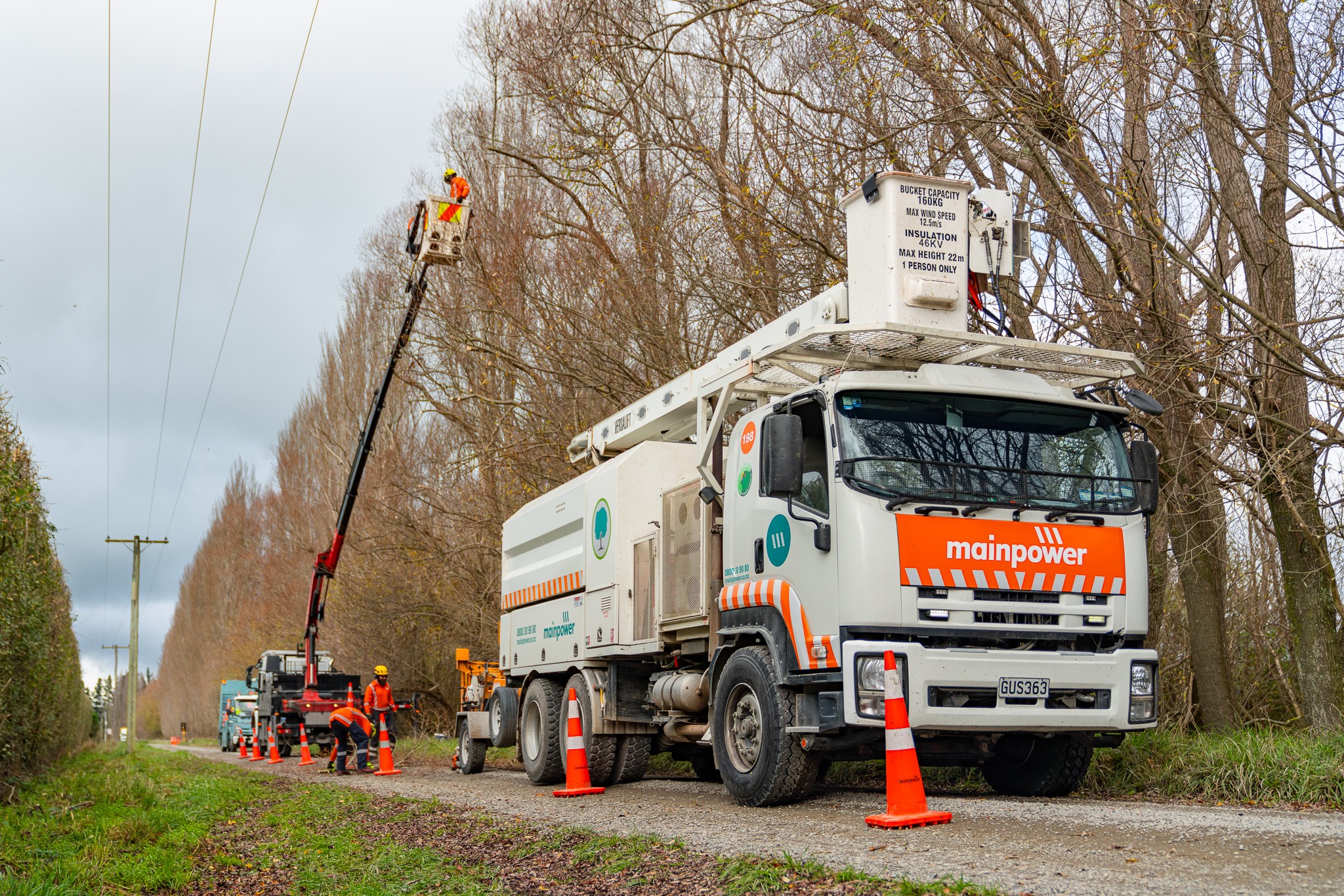Do you have a question? Want to learn more about our products and solutions, the latest career opportunities, or our events? We're here to help. Get in touch with us.

From the Waipara Valley wine region to the tourist towns of Hanmer Springs and Kaikōura, North Canterbury’s wide-open spaces make it a hub for food producers and nature lovers.
Naturally, all those wide-open spaces mean it’s also home to a whole lot of trees. And that’s a major consideration for the company charged with keeping the lights on across the region.
MainPower distributes electricity to around 43,000 homes and businesses, servicing 80,000 people across the Waimakariri, Hurunui and Kaikōura areas. A consumer-owned company with approximately 170 staff, it’s been powering North Canterbury for around 100 years.
To do this, MainPower maintains 5,166 kilometres of overhead power lines and underground cables across an 11,180 square kilometre area.
Monitoring the thousands of trees that line its network across this relatively large geographic territory is crucial for MainPower to meet its obligations to provide a safe power supply.

“Trees are a big issue for MainPower, and one we have to manage closely,” says MainPower Development Manager Mary Meehan.
“Often it’s vegetation falling on lines that causes power outages, especially during wind events.”
Field-based members of MainPower’s vegetation team regularly survey trees along its network. They identify more than 2,200 annually that pose potential risk to overhead power lines and require tree work.
In each of these cases, MainPower needs to contact the tree’s owner to outline the work required and ensure it’s carried out safely. It’s a process subject to regulated timeframes and requires up to five formal notification letters – plus text messages if the lines company carries out the tree work.
This multi-step process was being managed via an existing database, but it was struggling to deliver the functionality the electricity distributor needed.
Just two office-based members of the vegetation team were familiar with the bespoke system, and its limited functionality meant many processes remained manual and relied on knowledge from individuals.
Not all customer details and communications were captured on the database, with some instead held on individuals' work phones or email, for example, while the schedule for vegetation work was created by printing out each job, then placing it in a hard-copy pile.
MainPower has an ongoing relationship with Datacom, which provides support and improvement services across a number of the energy company’s systems and applications.
MainPower also engages Datacom on major technology projects; in 2019, for example, Datacom implemented Boomi, a new integration platform that significantly streamlined MainPower’s IT architecture.
So when it came time to replace its outdated vegetation database, it turned to Datacom.
To kick off the project, Datacom ran on-site workshops to understand MainPower’s issues and requirements, before scoping a potential solution and its high-level design.
MainPower was already using Salesforce to manage most of its customer information, and it made sense for a number of reasons to add functionality to that platform to handle vegetation.
“Using Salesforce meant we had a system that was current, supported and could be accessed by multiple people in the organisation. This reduced the risk to the business of having a system only a few people could use and, most importantly, was more customer-centric,” explains Mary.
“If someone in the business was dealing with a customer for any reason, they could also see information related to vegetation, offering a more holistic view to guide their interaction.”
Communication with tree owners regarding vegetation work – from notifying hazards, to quoting and scheduling tree work – is automated through Salesforce. This ensures consistent and standardised messaging to customers, and streamlines how MainPower meets regulatory requirements that dictate set timeframes for some of these communications.
The vegetation team’s work is also scheduled through Salesforce, affording clear visibility of the work cycle and required steps.
“The new system is much more efficient and there’s greater consistency with our processes and information. From a support perspective, being on Salesforce has also been fantastic.”
The new system was implemented over 18 weeks and went live in August 2021. Despite being carried out during higher levels of Covid-19 restrictions, the project ran smoothly, says Mary.
“The original scoping work meant the project was a known quantity before implementation got underway, and during delivery the project the team was very agile,” she says. “Good communication and the fact that Datacom already knew our systems contributed to the success of the project.”